When it comes to bike helmets, safety is always the top priority — and rightfully so. Helmets are your first line of defense in a crash, significantly reducing the risk of serious head injuries. In fact, studies show that wearing a helmet can reduce the risk of head injury by up to 85%. But here’s the thing: even the most advanced, safest helmet won’t do you any good if you don’t wear it consistently — and that’s where comfort becomes just as important as protection.
Many cyclists, from casual commuters to seasoned riders, struggle with helmets that are too tight, too hot, too bulky, or simply awkward to wear. These discomforts might seem minor at first, but over time, they become barriers to wearing a helmet at all. If your helmet leaves you with a headache, messes up your hair, or makes you sweat excessively, chances are you’ll be tempted to leave it behind “just this once” — and that’s a dangerous habit.
A helmet that’s comfortable, lightweight, and breathable encourages consistent use. It fits like a second skin, disappears while you ride, and doesn’t distract you from your surroundings. In short, it supports both your safety and your cycling experience.
Let’s not ignore the aesthetic factor. If you don’t like how a helmet looks, you’re less likely to wear it. Fortunately, today’s helmet designs offer plenty of stylish options without compromising safety. From sleek commuter models to bold and colorful road helmets, there’s something to match every personality and riding style. Comfort and style go hand-in-hand when it comes to creating a helmet you’ll genuinely enjoy wearing.
Think of comfort not as a luxury, but as an extension of safety. A helmet that doesn’t fit well can shift in a crash, reducing its effectiveness. A helmet that’s poorly ventilated can overheat you, affecting your concentration and reaction time. And a helmet that causes pressure points or irritation can become a source of distraction, which is risky when you’re navigating busy streets or high-speed descents.
So when choosing a bike helmet, don’t just check the safety certifications and call it a day. Pay close attention to how the helmet feels on your head, how it adjusts, how it handles sweat and heat, and whether you actually like wearing it. The best helmet is the one you’ll wear every single ride — and comfort plays a huge role in making that happen.
In the sections that follow, we’ll guide you through the key features that make a helmet comfortable, the safety standards you should know about, and some of the best helmets available for every type of rider. Whether you’re cycling to the office or racing through the hills, we’ll help you find a helmet that fits, protects, and feels great.
A properly fitting helmet doesn’t just enhance comfort — it’s essential for safety. An ill-fitting helmet may shift during a crash, leaving parts of your head vulnerable or even coming off entirely. That’s why understanding key fit features is crucial when choosing the right helmet. Let’s break down the four most important elements: sizing, straps, ventilation, and padding — and how they work together to deliver a secure and comfortable fit.
Size is the single most important factor in helmet fit. A helmet that’s too loose can slide around, while one that’s too tight can cause headaches and pressure points.
Use a flexible measuring tape (or string if you don’t have one).
Wrap it around the widest part of your head, usually about 1 inch (2.5 cm) above your eyebrows.
Note the measurement in centimeters — most helmets use metric sizing.
Compare your measurement with the manufacturer’s sizing chart, as sizes can vary between brands.
Helmet sizes typically fall into general categories:
Small: 51–55 cm
Medium: 55–59 cm
Large: 59–63 cm
Extra-Large: 63+ cm
Some brands offer unisex helmets, while others provide women-specific models that are slightly narrower or have different proportions.
If you’re between sizes, go with the smaller one if the helmet has an adjustable fit system. A snug fit is better than a loose one, as long as it’s not uncomfortable.
A modern helmet should include a multi-point fit system to customize the fit to your head shape. These systems are often found at the back of the helmet and allow for micro-adjustments.
Dial Fit: A small wheel you can turn to tighten or loosen the helmet.
BOA® System: A premium fit adjustment using a fine-tuned cable dial.
Slider or Elastic Fit Systems: Common in children’s helmets; they offer less precision but are easier for young riders.
Chin Strap: Should form a snug “Y” under your ears and fasten under the chin with room for just one or two fingers.
Side Buckles: Allow you to slide and adjust the strap length to prevent chafing.
Magnetic or Fidlock® Buckles: Offer easy, one-handed fastening — especially useful with gloves or for kids.
A properly adjusted strap system ensures the helmet doesn’t move during a crash, even if you’re wearing a hat or sunglasses underneath.
Ventilation is a key comfort feature, especially during long rides, warm weather, or high-intensity cycling.
Helps regulate body temperature
Reduces sweat buildup
Improves overall comfort and endurance
Number of Vents: More isn’t always better, but more vents usually mean more airflow. Road helmets can have 20+ vents, while commuter helmets may have fewer.
Vent Placement: High-performance helmets are designed with airflow pathways to channel cool air in and push hot air out.
Sweat Management Systems: Some helmets include inner channels or brow pads designed to wick sweat away from the face and eyes.
For commuters and casual riders, it’s also important to strike a balance — fewer vents can offer better protection in rain or cold.
Interior padding may seem like a minor detail, but it plays a big role in how a helmet feels during use.
Removable Pads: Can be taken out and washed, extending the life and freshness of your helmet.
Moisture-Wicking Pads: Draw sweat away from the skin and dry quickly.
Anti-Microbial Pads: Help reduce odors from bacteria buildup.
Multi-Density Foam: Provides varying levels of firmness for pressure relief and a more ergonomic fit.
Look for helmets with coverage throughout the interior, especially around pressure-prone areas like the forehead and back of the head.
Try on helmets with your typical riding hairstyle and accessories (e.g., ponytail, glasses, cap) to ensure the padding still provides a good fit and doesn’t create friction.
Fit, straps, ventilation, and padding don’t function in isolation. When combined correctly, they:
Keep the helmet firmly in place without discomfort
Prevent excessive sweating and overheating
Eliminate distractions caused by pressure or movement
Encourage regular helmet use by making it feel like part of your natural gear
Before buying a helmet, always try it on if possible — or purchase from a retailer with a solid return policy. Wear it around the house for a few minutes to test how it feels over time. If it causes discomfort within 10–15 minutes, it’s probably not the right fit for you.
Different types of riders have different needs. A daily commuter navigating city traffic doesn’t have the same helmet priorities as a road cyclist chasing miles or a child just learning to ride. Below, we’ve reviewed five of the best bike helmets tailored to each group — with a strong focus on comfort, safety, and real-world usability.
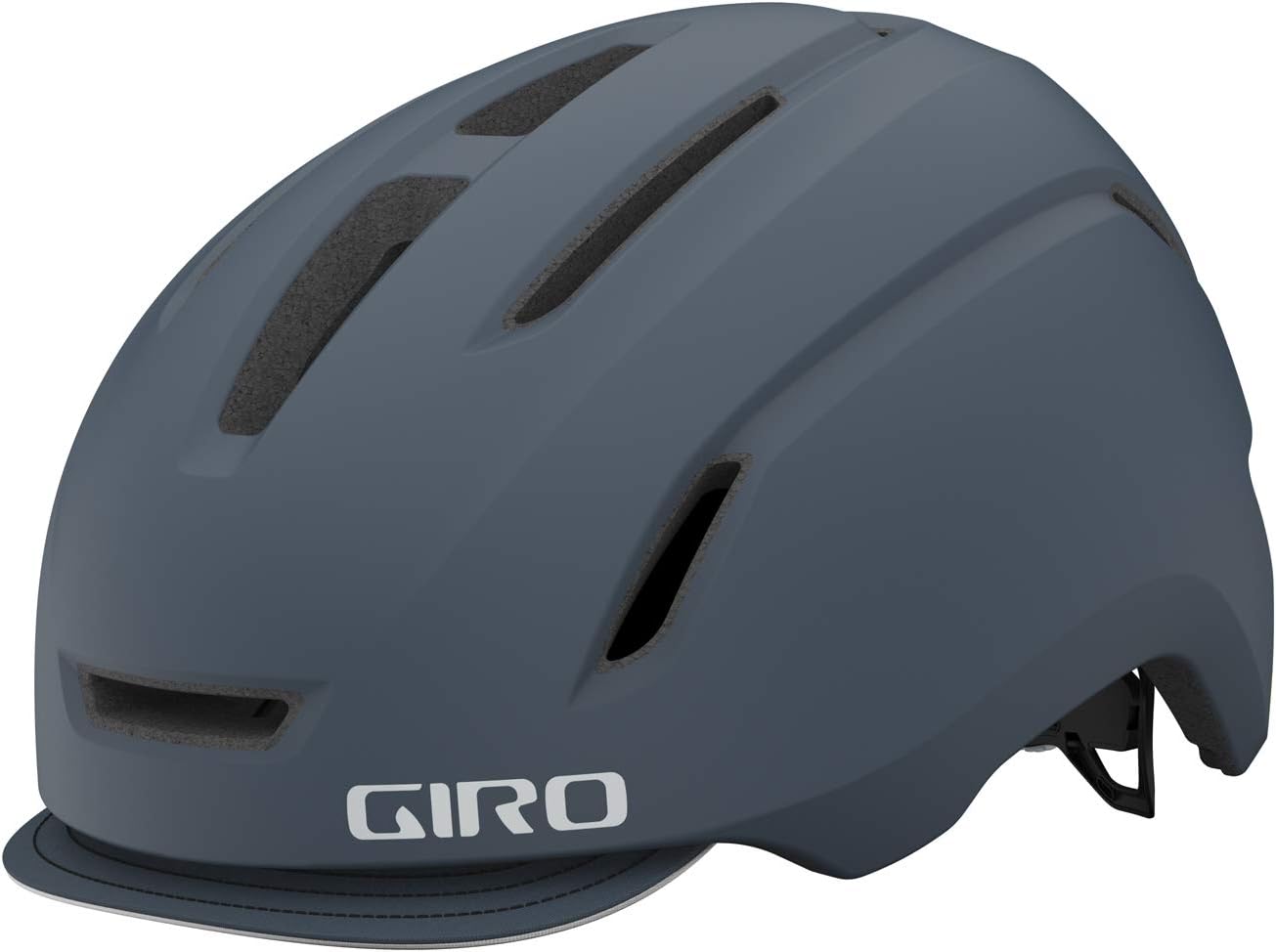
The Giro Caden MIPS is a commuter’s best friend — built to withstand the daily grind of city riding while keeping you protected, cool, and comfortable.
Its sleek, understated design blends well with everyday outfits, so you won’t feel like you’re wearing race gear to the coffee shop. It’s available in a range of matte colors, giving you style options without looking overly sporty.
Under the shell, you’ll find MIPS technology, which helps reduce rotational forces in the event of an angled impact — a common occurrence in urban crashes. The in-mold construction keeps it light but structurally sound, offering a great balance of durability and comfort.
What sets this helmet apart for commuters is its practical add-ons:
An integrated rear lock port allows you to thread your bike lock through the helmet, so you can leave it safely on your bike without worry.
The Roc Loc City fit system lets you dial in the perfect fit on the fly.
Twelve large vents provide enough airflow for hot city days without sacrificing protection.
For visibility, the helmet includes subtle but effective reflective detailing, helping drivers spot you at dawn or dusk. It’s a thoughtful, well-rounded helmet for those who need safety that works seamlessly with daily life.
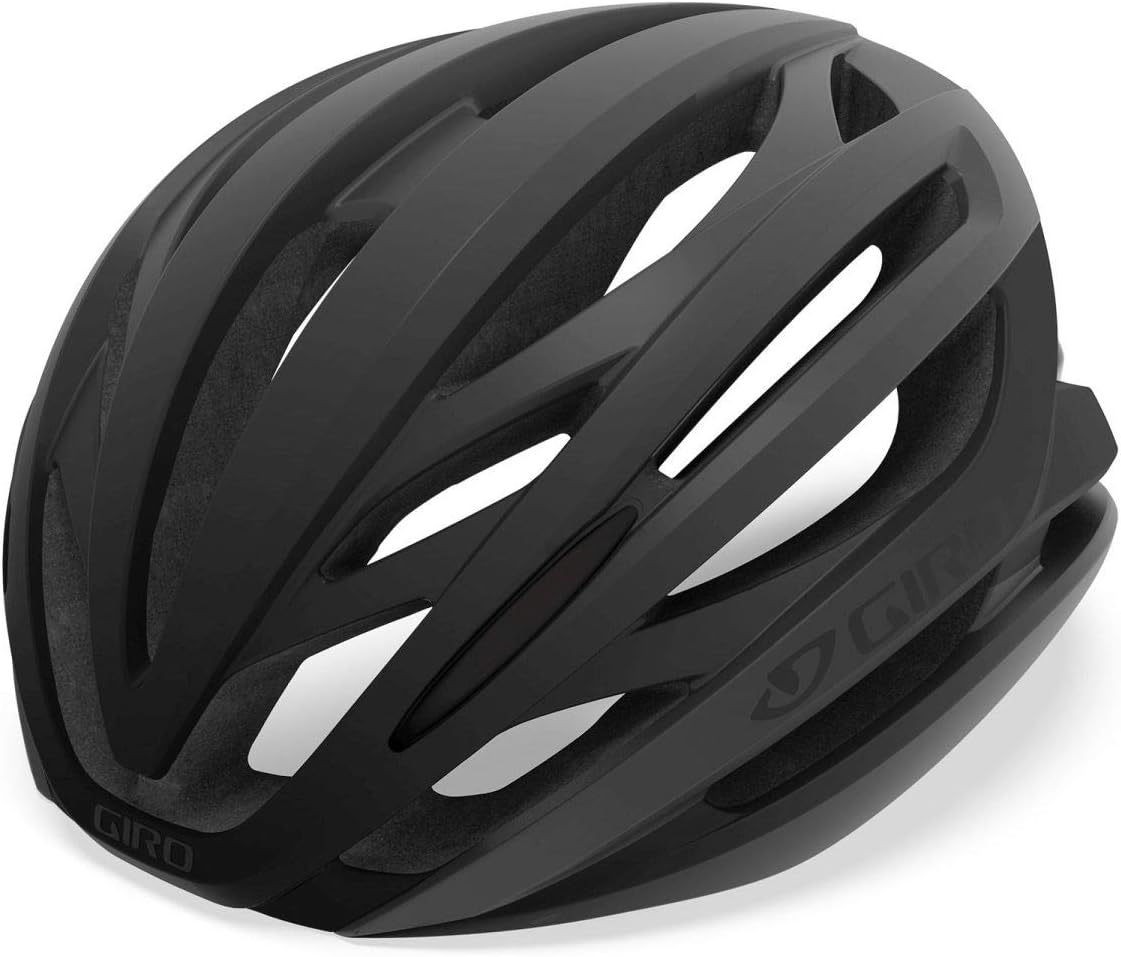
The S-Works Prevail 3 from Specialized is built for cyclists who demand elite performance without compromising comfort — ideal for road racers, triathletes, and serious enthusiasts.
At just under 250 grams, the helmet is incredibly lightweight — you may forget you’re even wearing it. Its innovative ventilation design features wide internal air channels and deep rear exhaust ports, which move air efficiently across your scalp, even at low speeds. This makes a huge difference on long climbs or summer rides.
The newest version includes MIPS Air Node, which is integrated directly into the helmet’s padding. Unlike older MIPS systems that added extra layers, this design keeps things ultralight and breezy. Despite its high-performance build, it maintains excellent comfort thanks to its 4X DryLite webbing straps, which stay dry and resist stretching even when soaked with sweat.
The fit system is fully adjustable with a small, low-profile dial that allows for one-handed micro-tuning. Internal padding is minimal but perfectly placed to avoid pressure points while still managing sweat.
Every detail on this helmet — from its aerodynamic shape to its cooling efficiency — has been tested by pros, and it shows. If you’re logging long miles or racing, it’s an investment that pays off in both performance and protection.
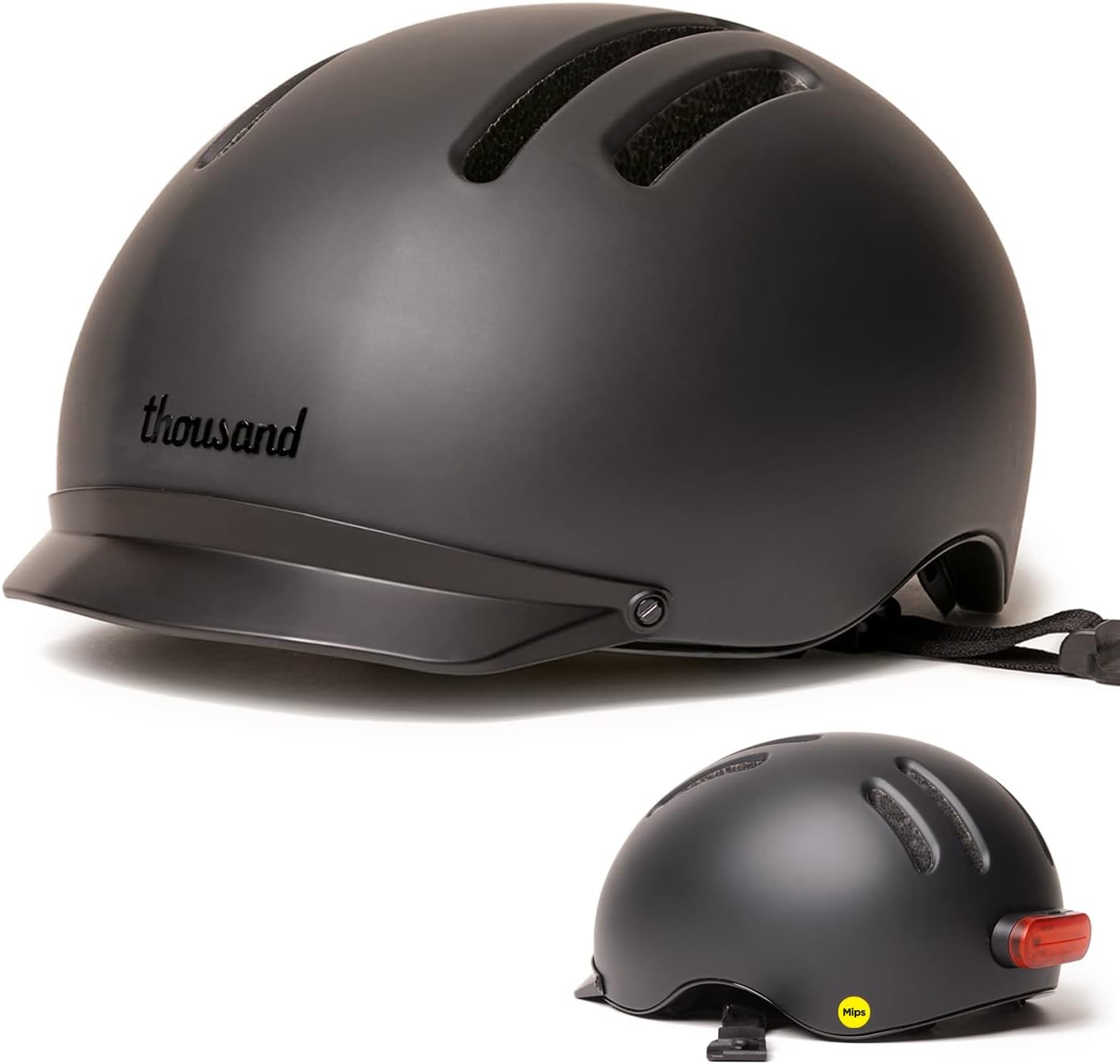
The Thousand Chapter MIPS helmet is where modern urban functionality meets clean, vintage-inspired design. It’s a favorite among fashion-forward cyclists who don’t want to compromise on safety.
This helmet is best known for its elegant look, which doesn’t scream “cycling helmet.” The rounded, low-profile shape and matte finishes give it a casual, commuter-friendly vibe. But make no mistake — it’s loaded with safety features.
It includes MIPS protection and a multi-density EPS foam layer, which absorbs impact energy from falls or collisions. One of its most unique features is the removable magnetic tail light, which attaches to the back of the helmet and increases your visibility in low-light conditions. It charges via USB and offers both steady and flashing modes.
The straps are made of vegan leather, adding comfort and a touch of sophistication. The internal fit system uses a dial adjuster to ensure a snug fit, and the helmet’s 10 vents do a surprisingly good job of keeping things cool during short to moderate rides.
There’s also a hidden pop-lock system that lets you secure the helmet to your bike with a U-lock — a game-changer for city riders who don’t want to carry their helmet around all day. Overall, it’s a stylish, safety-first choice that complements your daily routine instead of interrupting it.
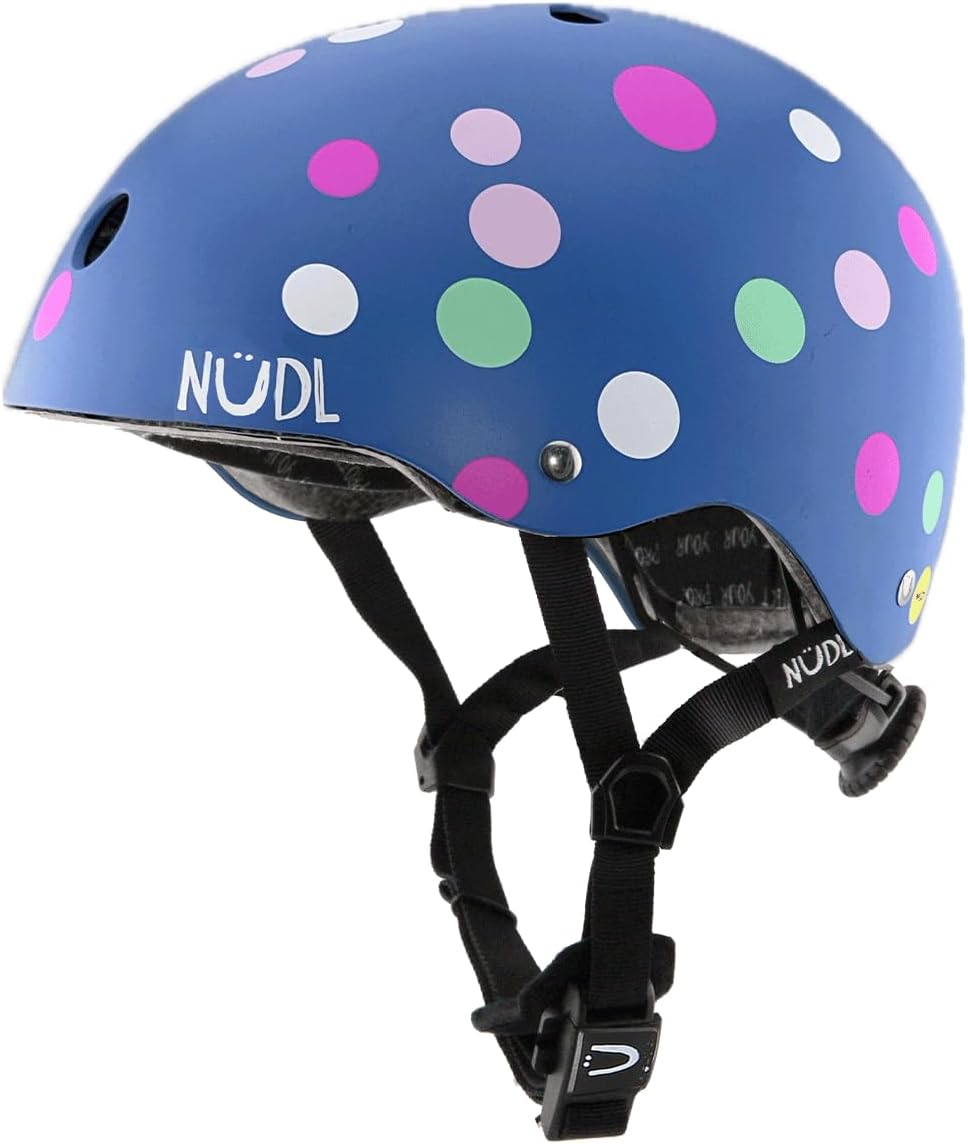
Getting kids to wear a helmet can be a challenge — but the Nutcase Little Nutty makes it a lot easier. It’s colorful, cool-looking, and built with the same safety technology found in adult helmets.
It includes MIPS protection, which helps protect against brain injuries caused by rotational motion during falls — a must for kids who are still learning balance and control. The outer shell is durable and full-coverage, offering more protection around the sides and back of the head than many budget kids’ helmets.
The 11 ventilation holes and internal air channels provide surprisingly good airflow for a helmet designed for younger children. The interior padding is soft, sweat-absorbent, and easy to clean, which parents will appreciate after a hot afternoon of scootering or biking.
One of the biggest wins is the magnetic buckle, which closes securely without pinching fingers or pulling hair. There’s also an adjustable fit dial at the back, allowing the helmet to grow with your child for a few years.
Design-wise, Nutcase doesn’t hold back. There are over a dozen eye-catching themes — including space rockets, animals, graffiti, and glitter — that make kids excited to put the helmet on. It’s fun, comfortable, and extremely safe.
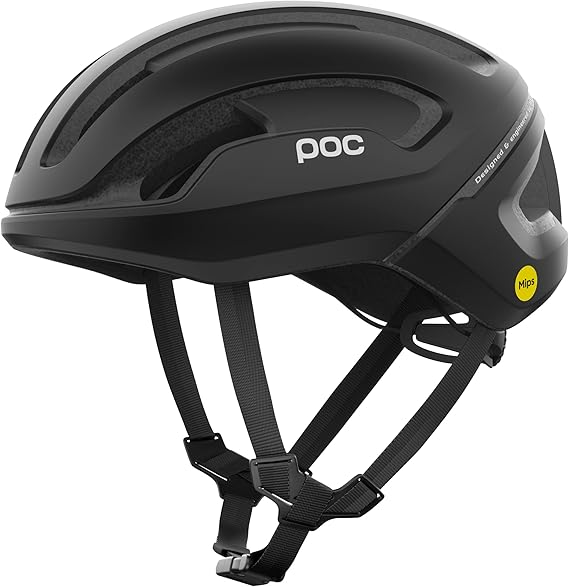
POC’s Omne Air MIPS is a true chameleon — versatile enough for road cycling, urban commuting, and everything in between. It offers a solid blend of style, comfort, and protection, making it a great choice for riders who don’t want to juggle multiple helmets.
It’s designed with a slightly deeper fit that provides better coverage around the temples and back of the head, making it feel secure and stable. The EPS liner is engineered to absorb both high- and low-energy impacts, and the integrated MIPS system adds extra protection from angled falls.
Ventilation is ample, with a smart layout of front and rear channels that allow constant airflow without making the helmet overly breezy — a plus for colder mornings. The inner padding is soft, moisture-wicking, and removable for easy cleaning. It fits closely without creating pressure points, and the dial-based fit system makes adjusting on the fly quick and easy.
With its smooth, aerodynamic silhouette and muted color options, the Omne Air looks just as good on a city bike as it does on a road bike. If you want one helmet that can do it all — training rides, commutes, weekend group rides — this one is a safe bet.
When it comes to bike helmets, looks and comfort are important — but safety is non-negotiable. A helmet’s primary role is to protect your brain in the event of an impact, and it can only do that effectively if it meets recognized safety standards. These standards are put in place by government agencies or independent organizations and involve rigorous testing protocols to ensure helmets provide adequate protection under real-world crash conditions.
Here’s what you need to know about the key safety certifications, what they actually test for, and how to spot a truly safe helmet.
🚨 Why Certifications Matter
When a helmet carries a certified safety label, it means it has passed a series of laboratory tests designed to mimic real-life crash scenarios. These tests typically evaluate a helmet’s ability to:
Absorb and distribute impact energy
Resist penetration by sharp objects
Stay securely on your head during impact
Provide consistent protection across different areas of the helmet
Without certification, there’s no guarantee the helmet offers any meaningful protection — regardless of its appearance or price.
Depending on where you live or where a helmet is manufactured, it may carry one or more of the following safety certifications:
Mandatory for all helmets sold in the U.S.
Covers impact attenuation (shock absorption), retention system effectiveness, and positional stability.
Helmets must withstand multiple impact types: frontal, top, side, and rear.
Requires helmets to maintain structural integrity at extreme temperatures and in wet conditions.
Bottom line:
If you’re buying in the U.S., look for the CPSC sticker inside the helmet. It ensures you’re getting a product that meets the legal minimum for head protection.
Covers bicycle, skateboard, and roller skate helmets.
Includes tests for impact absorption, strap strength, and field of vision.
Offers slightly lighter helmets compared to CPSC because of lower impact thresholds in testing.
Things to note:
EN 1078-certified helmets may be more breathable and comfortable due to their lighter build, but might not offer the same high-energy impact protection required under CPSC. Still, they are widely trusted across the EU.
Known for having some of the strictest helmet testing protocols in the world.
Includes roll-off tests, dynamic strap strength tests, and higher impact force simulations.
Required for legal road use in most Australian states.
What makes it unique:
This standard includes a higher level of scrutiny than many others, particularly when it comes to how well the helmet stays on during a crash.
SNELL B90/B95: Voluntary U.S. certification by the Snell Memorial Foundation. Exceeds CPSC in some areas, especially impact tests.
CSA-D113.2-M89: Used in Canada. Less common today as CPSC and EN 1078 have become more standardized globally.
JIS T8134: Japan’s national standard, similar in some aspects to EN 1078.
You’ve probably seen terms like MIPS, WaveCel, or SPIN in helmet descriptions — but these are not certifications, they’re additional safety technologies.
Designed to reduce rotational forces during oblique impacts.
Uses a low-friction inner layer that allows the helmet shell to rotate slightly relative to your head, absorbing rotational energy.
Competing rotational protection systems that use unique materials or fluid-filled pads to achieve a similar effect.
SPIN has largely been phased out in favor of MIPS in newer POC helmets.
While not mandatory, these technologies offer an added layer of brain protection, especially useful in falls where the head hits the ground at an angle — which is more common than direct vertical impacts.
Look inside the helmet for a sticker or label — usually under the padding or on the liner.
The label should list:
The certification standard (e.g., CPSC, EN 1078)
The manufacturer
A date of production (this can also help you judge if the helmet is too old).
Avoid helmets with no certification. Even if they’re cheap or look high-tech, they haven’t passed proven safety tests.
The rise of online marketplaces has made it easier for low-quality, non-certified helmets to reach consumers. These helmets may look nearly identical to certified models but do not offer reliable protection. They often fail basic impact or strap strength tests and may crack or shift during a crash.
Suspiciously low prices
No listed safety certification
Missing interior label or date
Generic packaging with little branding
Only buy from reputable retailers or directly from known brands to ensure the helmet you receive meets safety standards.
| Standard | Region | Mandatory? | Tests for Rotational Impact? | Key Strengths |
|---|---|---|---|---|
| CPSC | USA | Yes | No | Strong impact resistance |
| EN 1078 | Europe | Yes | No | Lightweight, comfortable designs |
| AS/NZS 2063 | Australia/NZ | Yes | No | Extremely rigorous strap and roll-off tests |
| SNELL B95 | Optional (Global) | No | No | High-impact testing, very thorough |
| MIPS | Global (add-on) | No | Yes | Adds rotational impact protection |
When shopping for a bike helmet, never compromise on safety certifications. They’re your best guarantee that the helmet you choose will perform when it matters most. A good helmet will meet at least one major standard — a great helmet might go beyond that by integrating advanced protection technologies like MIPS or WaveCel.
When it comes to bike helmets, looks and comfort are important — but safety is non-negotiable. A helmet’s primary role is to protect your brain in the event of an impact, and it can only do that effectively if it meets recognized safety standards. These standards are put in place by government agencies or independent organizations and involve rigorous testing protocols to ensure helmets provide adequate protection under real-world crash conditions.
Here’s what you need to know about the key safety certifications, what they actually test for, and how to spot a truly safe helmet.
MIPS stands for Multi-directional Impact Protection System. It’s a patented technology developed in Sweden by neuroscientists and biomechanical engineers to reduce the risk of brain injury caused by rotational motion during a crash.
Most bike crashes don’t involve a perfectly vertical fall. Instead, your head usually hits the ground at an angle, creating rotational forces that can strain or damage the brain — even if your helmet stays intact. This kind of motion has been linked to concussions and more serious brain trauma.
MIPS is designed to combat this.
Inside a MIPS helmet, you’ll find a thin, low-friction liner that sits between the helmet shell and your head. This liner allows the helmet to slightly rotate (10–15 mm) independently of your head during an angled impact.
This mimics the brain’s own protective system — the cerebrospinal fluid that allows the brain to move slightly within the skull — helping to redirect and reduce rotational forces before they reach your brain.
You won’t notice the liner while riding, and it doesn’t make the helmet noticeably heavier or bulkier.
While no helmet can fully eliminate the risk of injury, independent testing consistently shows that helmets with MIPS offer better protection in certain crash scenarios, especially those involving angular impacts — which are the most common type in real-world cycling accidents.
A study by Virginia Tech’s helmet lab, which ranks helmet safety using star ratings, found that MIPS-equipped helmets often perform significantly better than their non-MIPS counterparts. Many helmets that earned a 5-star safety rating (the highest possible) include MIPS or a similar rotational protection system.
In most cases, no. MIPS liners are designed to move independently of your head, not dig into it. Most modern helmets incorporate the liner in a way that doesn’t interfere with fit, ventilation, or padding. In fact, some MIPS versions (like MIPS Air or MIPS SL) are seamlessly integrated into the padding and are virtually unnoticeable.
That said, some riders with very specific head shapes or sensitive pressure points may want to try the helmet on in person to ensure comfort — especially for extended wear.
Yes, typically — but not by much. Helmets with MIPS often cost $20–50 more than similar models without it. However, that extra cost goes directly into enhanced safety engineering. Many riders consider this a worthwhile investment, especially if they ride:
In traffic or busy urban areas
At high speeds
On trails or uneven terrain
With children (many kid helmets now come with MIPS too)
Look for the yellow MIPS logo on the helmet, box, or product listing.
Inside the helmet, you’ll typically see a thin yellow liner or tab labeled “MIPS.”
The product description should clearly state if it includes MIPS.
Be cautious of imitations or off-brand “rotational systems” that may not be independently tested — always verify from reputable brands.
If you ride regularly — whether in the city, on trails, or on roads — a MIPS-equipped helmet offers added peace of mind without major compromises in comfort or cost.
It’s especially recommended for:
Commuters in high-traffic areas
Road cyclists and racers
Mountain bikers and trail riders
Kids and young riders still developing coordination
While a MIPS helmet isn’t mandatory, it’s a smart move if you want to go beyond basic protection and proactively reduce the risk of brain trauma from angular impacts.
Choosing the right bike helmet is about so much more than ticking off a safety requirement — it’s about enhancing your entire riding experience. A helmet that fits well, feels great, and suits your personal style is one you’ll actually want to wear, and that’s the key to staying consistently protected on every ride.
From understanding critical fit features like sizing, straps, and ventilation, to recognizing trusted safety certifications like CPSC, EN 1078, and AS/NZS 2063, this guide has shown how to make informed decisions that prioritize both comfort and protection. We’ve also explored the game-changing benefits of MIPS technology, and offered curated picks for some of the best helmets for commuters, road cyclists, and kids — each tailored to specific riding needs.
No matter where or how you ride, investing in a quality helmet is one of the smartest decisions you can make for your health and safety. A great helmet should feel like part of your routine — easy to adjust, pleasant to wear, and reliable in all conditions.
Stevora.com is a participant in the Amazon Services LLC Associates Program, an affiliate advertising program designed to provide a means for sites to earn advertising fees by advertising and linking to Amazon.com. Amazon and the Amazon logo are trademarks of Amazon.com, Inc. or one of its affiliates.
| Cookie | Duration | Description |
|---|---|---|
| cookielawinfo-checbox-analytics | 11 months | This cookie is set by GDPR Cookie Consent plugin. The cookie is used to store the user consent for the cookies in the category "Analytics". |
| cookielawinfo-checbox-functional | 11 months | The cookie is set by GDPR cookie consent to record the user consent for the cookies in the category "Functional". |
| cookielawinfo-checbox-others | 11 months | This cookie is set by GDPR Cookie Consent plugin. The cookie is used to store the user consent for the cookies in the category "Other. |
| cookielawinfo-checkbox-necessary | 11 months | This cookie is set by GDPR Cookie Consent plugin. The cookies is used to store the user consent for the cookies in the category "Necessary". |
| cookielawinfo-checkbox-performance | 11 months | This cookie is set by GDPR Cookie Consent plugin. The cookie is used to store the user consent for the cookies in the category "Performance". |
| viewed_cookie_policy | 11 months | The cookie is set by the GDPR Cookie Consent plugin and is used to store whether or not user has consented to the use of cookies. It does not store any personal data. |